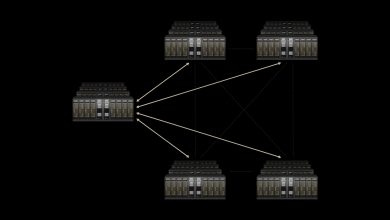2025 Tech Predictions – APJ Commentary from Veeam

By Anthony Spiteri, Regional CTO APJ, Veeam
The rise of AI-focused leadership roles
Unsurprisingly, the continuous proliferation of data into 2025 will see the introduction of new AI-focused roles. Chief AI Officers (CAIOs) are responsible for overseeing the ethical, responsible and effective use of AI across organisations and bridging the gap between technical teams and key stakeholders. Such talent is also responsible for the strategic use of such technologies to drive scale and impact. This evolution will mark the increasing integration of data resilience in the boardroom. CAIOs will work alongside Chief Data Officers and Data Privacy Officers, whose roles are expanding to include responsibilities around ensuring data integrity, recoverability, and alignment with AI initiatives. Together, companies can drive impact and innovation through AI while safeguarding critical data assets.
AI middleware companies to bridge the gap in AI adoption
In 2025, we will see more businesses engaging AI middleware companies to help faster adoption of secure, responsible and efficient AI solutions. Middleware simplifies the adoption process by allowing different systems to communicate seamlessly, reducing the need for in-house AI expertise. According to IDC, investments in AI and generative AI (gen AI) will continue to increase at a compound annual growth rate of 24% from 2023 to 2028. By leveraging third-party expertise, organisations reduce the risks associated with AI development and improve time to market.
Middleware also helps maintain ethical standards without the need for in-house AI specialists. This is significant as governments are imposing stricter regulations around the responsible and ethical use of AI – Singapore, for example, updated its AI Ethics & Governance Body of Knowledge in August this year, expanding the scope to more AI and GenAI applications. With the rise of AI middleware solutions, businesses will see a marked increase in the volume and complexity of data they need to handle. This surge will drive a greater need for robust data management practices, ensuring that critical AI datasets are well-protected and retained securely. As companies scale AI applications, the ability to efficiently manage and safeguard this expanding data pool will become essential to building a resilient AI strategy.
Repatriation of data from the public cloud to on-premise
A number of businesses are expected to move workloads from the public cloud back to on-premises data centres to manage costs and improve efficiencies. This is the essence of data freedom – the ability to move and store data wherever you need it, with no vendor lock-in.
Organisations that previously shifted to the public cloud now realise that a hybrid approach is more advantageous for achieving cloud economics. While the public cloud has its benefits, local infrastructure can offer superior control and performance in certain instances, such as for resource-intensive applications that need to remain closer to the edge. We can also now consume and operate on-premises infrastructure with the same tooling and level of automation previously restricted to the public cloud. Gartner says that many companies are re-evaluating their data strategies after seeing the full implications of shifting workloads, which has led to a renewed interest in hybrid and multi-cloud models. Factors such as market uncertainty, evolving licensing structures, and regulatory considerations will also influence this shift, as businesses seek data strategies that are adaptable while optimising access and data sovereignty. As a result, businesses are seeking more flexible and scalable solutions, such as multi-cloud or hybrid-cloud approaches.
However, any shift in data infrastructure poses risks, including data loss or corruption. With increasing concerns around moving data safely and with integrity, many businesses will turn to vendors, such as Veeam, who already have data resilience ingrained within its backup and recovery solutions.




